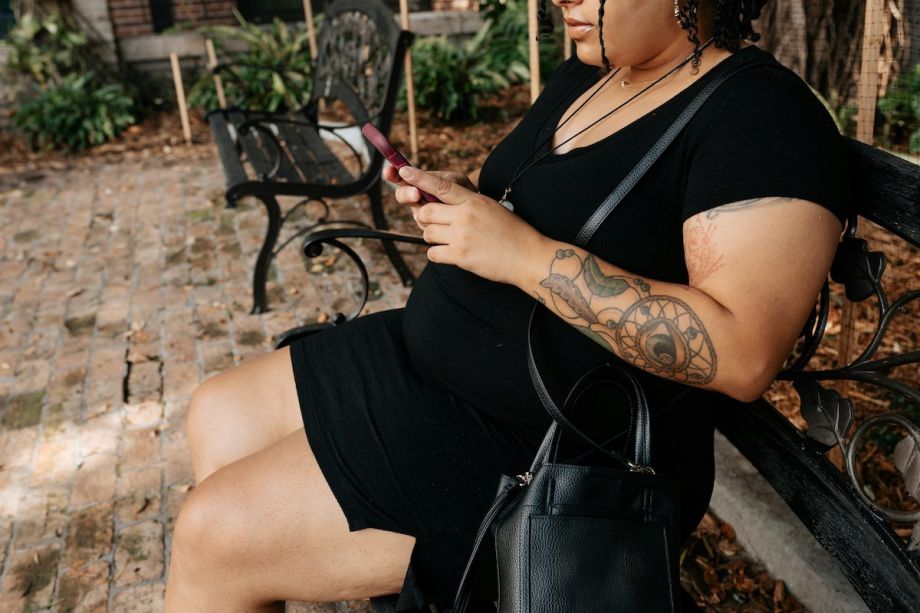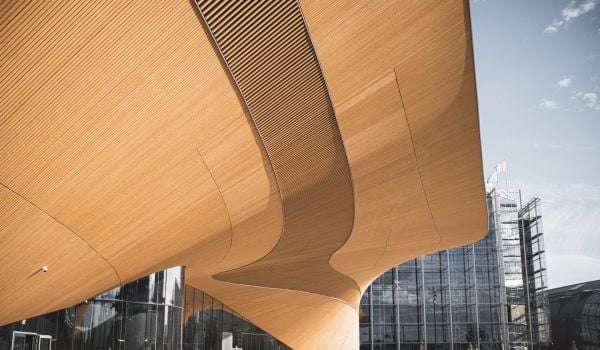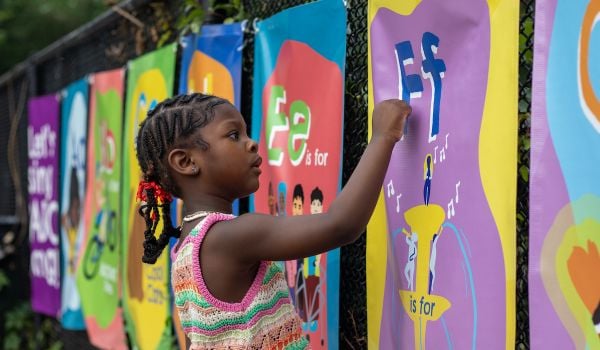Urbanists talk often about our right to mobility, working to ensure that we are all able to walk or roll down the streets of our cities. But what about our right to stop walking – to take a seat so we can rest our bodies, have a snack, take in the view or chat with friends?
Baltimore, where I live, is known for its iconic wooden slatted benches, bearing the tagline “The Greatest City In America.” But whether city-goers can find comfort in these benches, or other public furniture in parks, dining parklets or along city streets, depends greatly on our body types.
As both a human-centered designer and someone who is fat, street furniture limits how I experience cities through their urban placemaking and development. For many years, I have known and lived this truth: Cities and their communities are not being designed for someone with my body type.
For those at the intersection of factors like weight, pregnancy, age and disability, the challenge of finding suitable public seating can disrupt a sense of belonging and inhibit our ability to thrive. Something as simple as taking a walk in a park or meeting a friend for lunch may become a daunting task due to design shortcomings in open spaces.
But there are models emerging for a better way forward.
In cities like Boston, the age-friendly bench initiative emerged in 2019 through multi-partner collaborations involving the City of Boston’s Age Strong Commission, WalkMassachusetts and Boston’s Mayor’s Office of New Urban Mechanics. According to the city’s website, benches installed as part of the initiative must feature raised backs for support and armrests to enhance the sit-to-stand ability of elderly individuals. These benches are strategically placed near libraries, community centers and public transit hubs to ensure accessibility for residents. Notably, these benches don’t have a middle bar, which could impede comfort for individuals at the intersections of weight, pregnancy, age and disability. Where benches with such bars are encountered, they can often be removed with a hex key.
The inception of this initiative traces back to an age-friendly action plan established in 2017. Boston’s Former Mayor Walsh allocated $90,000 towards the placement of 89 benches, a goal that seems to have been achieved as indicated by this bench map. Moreover, Boston’s broader urban planning efforts, including the Go Boston 2030 transportation plan, prioritize pedestrian movement over car-centric infrastructure.
An even larger investment in enhancing the comfort of street seating has been made in New York City. In 2011, the city’s CityBench program was initiated, supported by a $3 million grant from the Federal Transit Administration. Similar to Boston, the benches in New York City are strategically placed near senior centers, shopping districts and bus stops without shelters. These urban benches — specifically designed for New York City by industrial designer Ignacio Ciocchini and the Chelsea Improvement Association — are intentionally wide to accommodate individuals comfortably, allowing them to spread their legs or place personal belongings without inconveniencing their neighbors.
There are over 2,100 benches across across five boroughs. On an ongoing basis, residents can request street furniture locations using 311. In New York, there are also unintended seating solutions, like bike-share docking stations, where people end up gathering and seeking rest.
“This might not strike you as an intellectual bombshell,” observer of urban behavior William H. Whyte liked to say, “but people like to sit where there are places for them to sit.” Whyte’s studies of plazas and parks indicated that individuals weren’t particularly selective about where they sat, as long as they had a place to sit. Park benches and other forms of public seating, while seemingly small components of our daily urban environment, play a significant role in shaping our interactions with open spaces and each other.
In line with the theme, Whyte’s insights were adapted into the 2013 guidebook “How to Turn a Place Around” by Project for Public Places in 2013, which yielded findings that informed design recommendations aimed at enhancing plazas in New York City. The recommendations primarily emphasized the integration of built-in forms.
Built-in forms present a promising intervention for creating basic and inclusive seating. By rendering built-in features “sittable,” they offer people the freedom to choose how and where they sit, without the constraints often associated with traditional chairs and benches. These features can include ledges, parapets, and flat surfaces. Notably, built-in forms stand apart from conventional chairs and benches due to their absence of restrictive elements that might cause discomfort or limitations, particularly for individuals with diverse body types and life experiences.
As I walk through my own city, I seek out benches that lack hard metal armrests, which can be uncomfortable and fail to accommodate diverse body types and comfort preferences. Even though most benches were not designed with being cozy in mind, I’m optimistic.
I search for chairs in public spaces, such as restaurants or more newly established dining parklets, that go beyond molded plastic designs limiting body size and offer more forgiving, comfortable seating.
While Baltimore’s Department of Transportation provides guidelines for parklet and plaza dining, it overlooks the importance of seating comfort and pays minimal attention to the concept of body positivity. Shouldn’t community-oriented spaces be about promoting belonging for their residents rather than exclusion?
According to data from the U.S. Census Bureau, over half of Baltimore’s population (53.3%) is aged 65 or older. That could include someone who, according to Project for Public Spaces, might need benches to be spaced so that wheelchairs can be accommodated. Baltimore’s adult obesity rate, as of 2015, was about 33%. While the US Architectural Barriers Act defines some requirements for bench height and spacing when building courtrooms, locker rooms and dressing rooms, there aren’t currently requirements for comfort or for ‘allowable stresses’ or humans applied to the bench over 250 pounds.
Addressing these needs can boost our tourism and downtown revitalization strategies, too. Size is becoming a well-documented travel conversation. If cities don’t invest in inclusive seating they may as well invest in street signage that says, “Your body is not welcome here.”
Most major cities, including Baltimore, have tourism budgets with an aim to funnel people to its parks, restaurants, sports and concert venues. And like our own residents, our visitors come with diverse body types and accessibility needs. Third-places should be accessible to everyone. No matter if they’re living in the city or visiting.
Hostile architecture and defensive design are known for discouraging humans who might be unhoused from staying in an area for too long. But if an armrest, chair width or other seating features discourage varied body types — whether housed or unhoused residents or visitors — from sitting comfortably in our cities, isn’t that hostile, too?
I’m not alone in wanting liberation from public infrastructure and its reminders that I don’t fit in, literally. In an era encouraging individuals – especially Black and queer individuals like myself — to claim their space and prioritize radical self-care by disengaging from the relentless grind culture, it’s disheartening that bodies like mine often face the challenge of even taking that initial step in public spaces: simply sitting down.
Alanah Nichole Davis is a Bronx-born, Baltimore-based journalist, cultural worker and human-centered designer.











Add to the Discussion
Next City sustaining members can comment on our stories. Keep the discussion going! Join our community of engaged members by donating today.
Already a sustaining member? Login here.